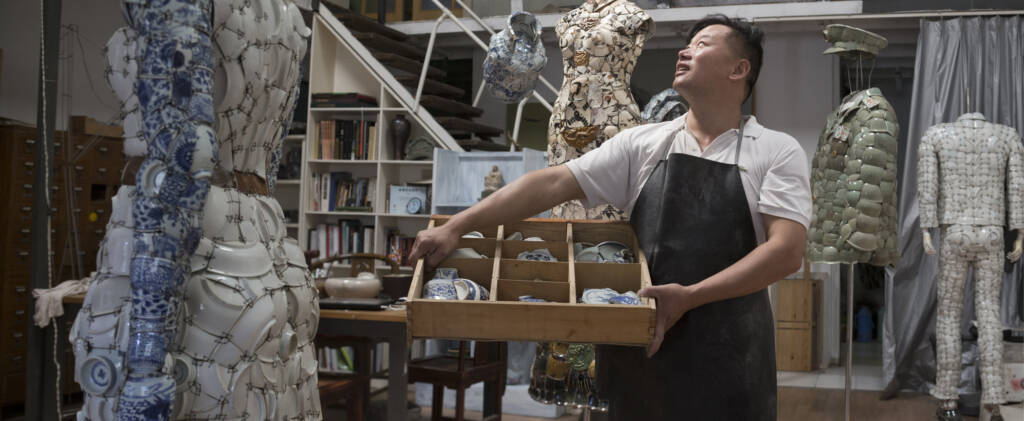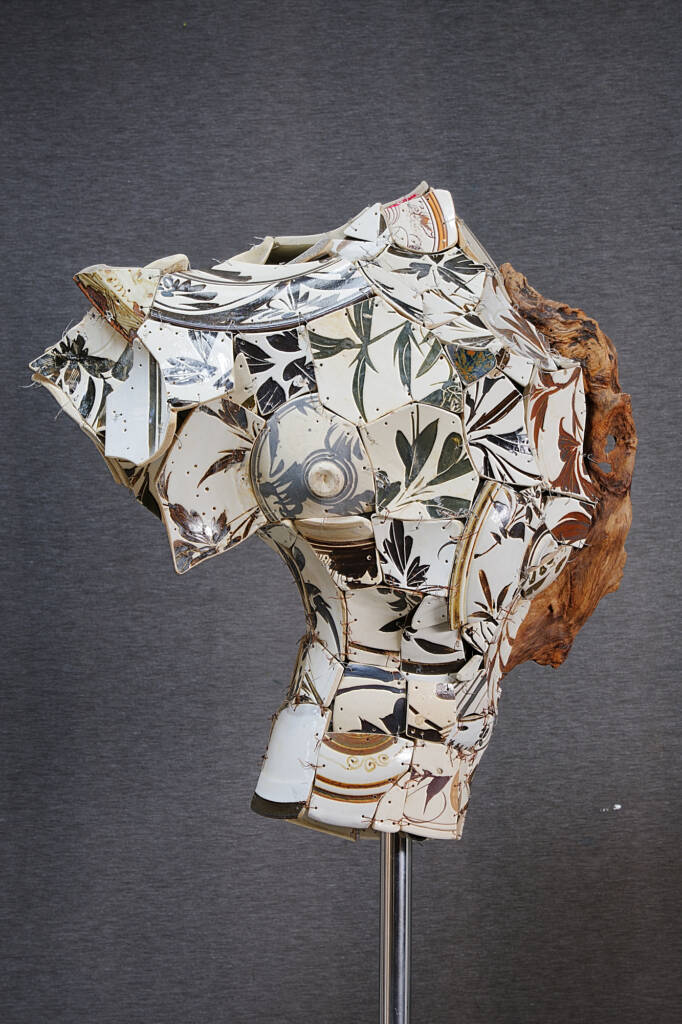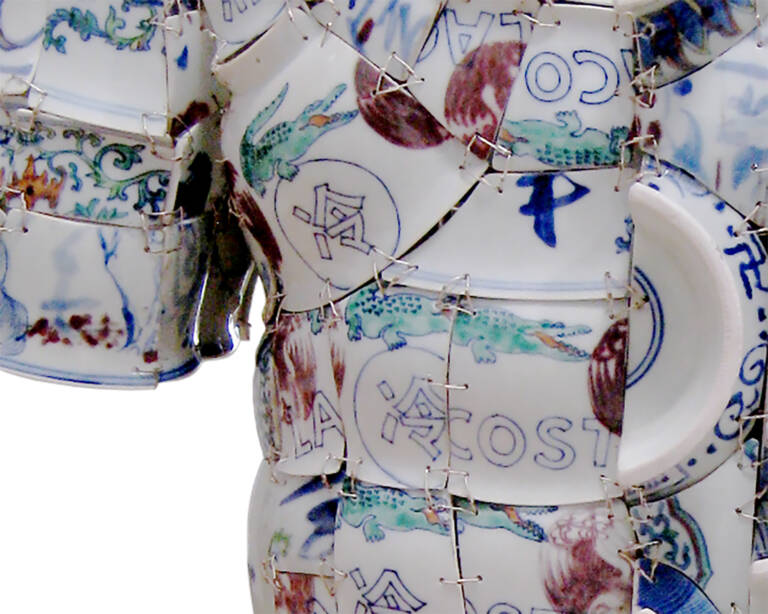
Photography by GARRIE MAGUIRE

Birth of Q2, 2025
Song Dynasty and Yuan Dynasty Cizhou kiln porcelain shards
Photography by GAO YANG
In the hands of Li Xiaofeng, fragments of ancient porcelain find new life, not as relics of the past but as intricate garments redefining wearable art. It’s not about just making garments – it’s about stitching together centuries. With shards of ancient porcelain, salvaged from the ruins of China’s storied dynasties, he crafts sculptures that defy convention. These pieces, both fragile and bold, merge history with innovation. Li Xiaofeng’s work isn’t just couture – it’s a conversation across time.
hube: Like a sculptor shaping stone or a painter mixing pigments, you work with porcelain shards, pieces of the past, to create new, living art. How do you transform these fragments of history into something that speaks to the present? Does each shard carry a particular memory or emotion you try to awaken?
Li Xiaofeng: China has been using clay to make pottery since the Neolithic period. After thousands of years of ceramic development, a splendid and brilliant ceramic art culture was created. Blue and white porcelain took shape in the Yuan dynasty, reaching its peak, which is closely related to the maturity of painting art since the Tang and Song dynasties. Through continuous firing and improvement during the Ming and Qing dynasties, Chinese porcelain became famous both domestically and abroad for its ‘white as jade, bright as a mirror, thin as paper, and sound as a bell’. The term ‘Fine China’ refers to exquisite porcelain.
The ancient ceramics’ simple, elegant, and restrained aesthetic often leaves me lingering and gives me rich spiritual nourishment. Over the years, I have travelled across construction sites and antique markets collecting porcelain shards. My love for ceramics makes me enjoy it endlessly. Every time I discover a shard with bold brushstrokes and exquisite craftsmanship, I get excited for a long time.
For centuries, these broken ceramics were buried as waste in the yellow soil. With large-scale urban construction, these ancient cultural remnants, carrying the brilliance and splendour of the past, shine alluringly in the sunlight. I bring them back to the studio and categorise them based on their age, patterns, and shapes. Facing piles of porcelain pieces that resemble the deep blue of the sea, one can’t help but think wildly, and inspiration comes like a fountain, arriving as expected. I then shape them with clay and carefully consider the right pieces that match the shape, curvature, and overall pattern. I then carefully grind, drill, and connect them with metal wire to complete the initial concept.
h: Your pieces seem to stitch together centuries of history, connecting ancient porcelain with contemporary aesthetics. How do you see the relationship between these historic materials and your vision of modern China?
LX: In my artistic creation journey, I always carefully select materials, ensuring each choice aligns with my creative philosophy. In 2008, I completed a work titled Sailing to the West, using porcelain shards with the ‘sea wave pattern’, which was popular during the mid-Ming dynasty. This pattern is a historical mark of Zheng He’s seven voyages to the West, witnessing the deep integration of China and the world during that era. In form, I borrowed the ‘suit’ shape from Western men’s clothing. As a Chinese artist born in the 1960s, I feel deeply connected to the social changes. The popularity of the suit in China not only reflects the evolution of folk aesthetics but also mirrors the influx of Western thoughts, bringing new ideas and cultural perspectives to China.
Today, the world is complex, and the flattening and fragmentation brought by artificial intelligence deeply influence and change people’s thoughts and lives. In a sense, my blue-and-white porcelain works interpret and echo the characteristics of this era. China, like its history, is constantly fragmented, constantly rebuilding, and constructing a beautiful future through painful processes! I firmly believe that China in the future will be built on the foundation of universal values and will emerge with a new appearance.

